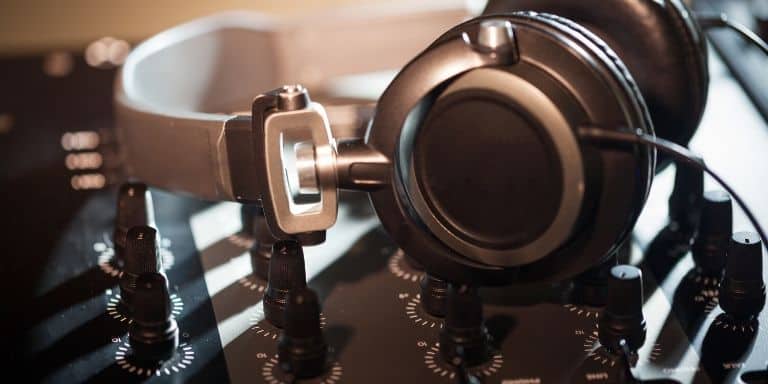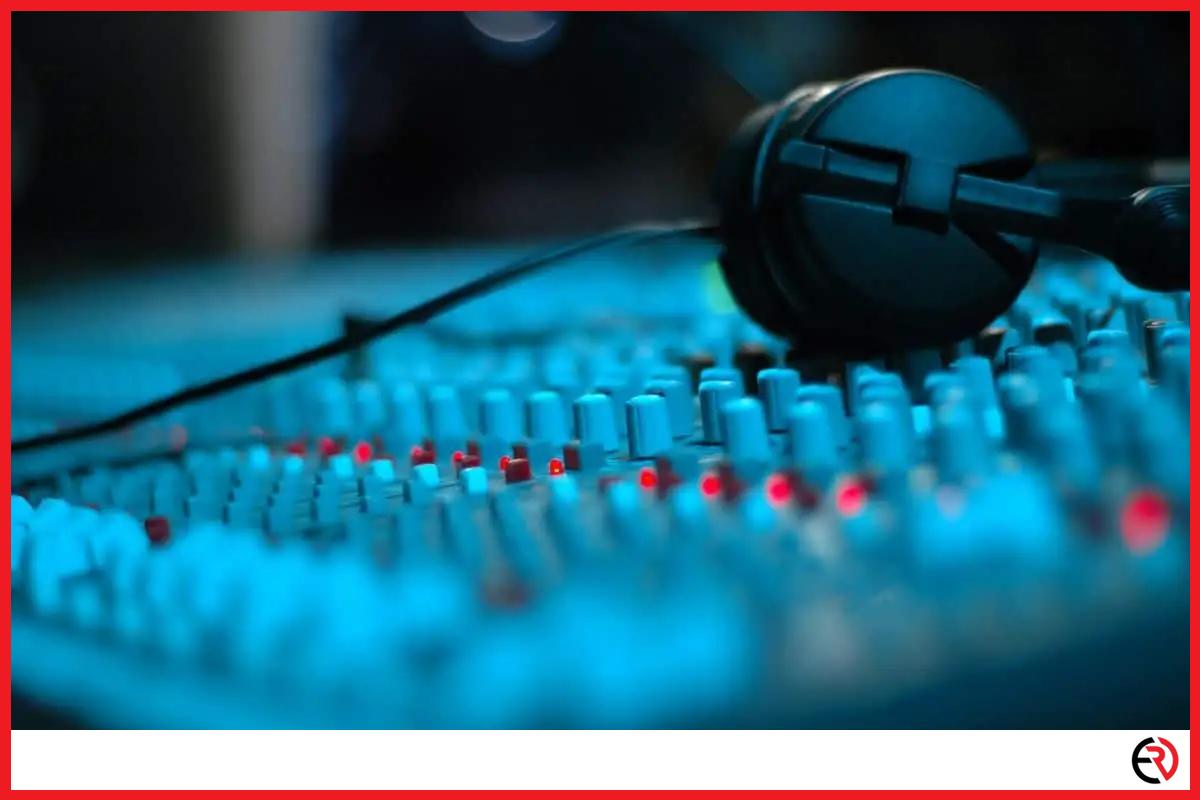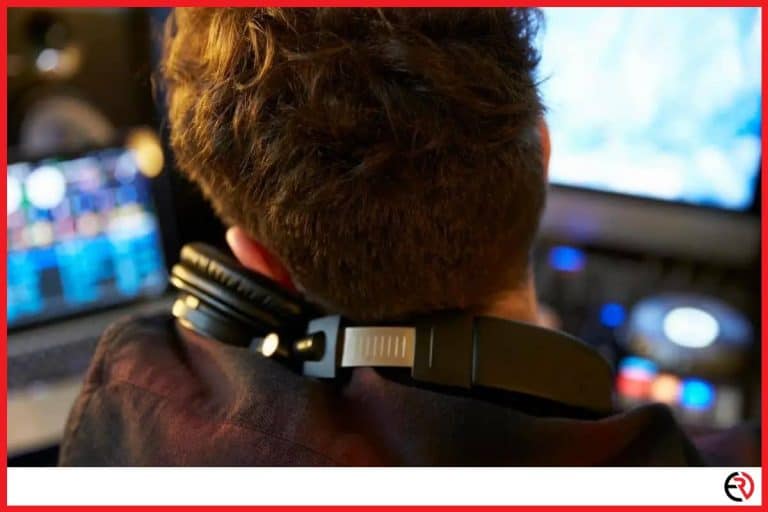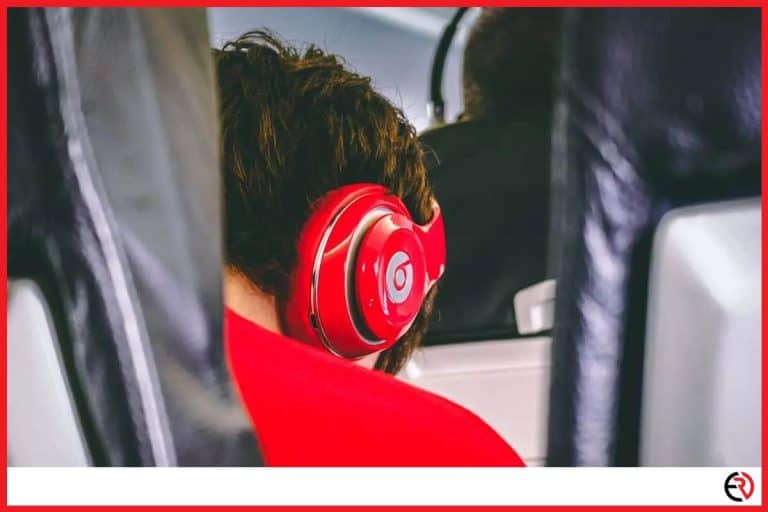Should you mix with headphones or monitors?
This post may contain affiliate links which means that, if you choose to make a purchase, I may earn a small commission at no extra cost to you.
Amateur home studio owners often wonder whether it is better to mix their tracks using monitors or headphones. The argument for each side is strong and there is no definite answer. This is because if you know what you are doing, you can achieve good results using any of these tools. Plus, different people have different preferences and ultimately, you have to decide what you want more as headphones and monitors serve different purposes while mixing audio.
Should you mix with headphones or monitors? Ideally, you should mix with both headphones and monitors as both types of devices offer unique advantages for mixing. However, if you had to choose one, you should go with monitors, although it is possible to create good mixes with headphones too.
In this article, we will discuss why it is better to mix with both headphones and monitors. You will also learn the things that you need to consider if you can only opt for either monitors or headphones. Finally, we will discuss the type of headphones that are best suited for mixing along with some recommendations.
Mixing with headphones vs monitors – what the experts say
According to experts, the sounds emitted by monitors and headphones interact with our ears in a distinct way and result in a different listening experience. Thus, none of them is a replacement for the other. Also, using both headphones and monitors for mixing can help you to address their shortcomings while allowing you to utilize their advantages.
Using a good set of monitors to mix audio was the norm for a majority of the audio engineers. However, with the development of quality headphones, many audio engineers have started to use headphones for mixing too. In fact, many professional hits have been produced solely using headphones.
Thus, if you are just starting out and your budget only allows you to buy a pair of quality headphones, the investment would not be a waste. Later, you can create or rent an acoustic studio and start using monitors to mix in the best environment.
Often, other factors such as your living environment may prevent you from using monitors to mix your music. In such cases, your only option is to use a pair of headphones to mix your music.
The key to producing good mixes is to get extremely familiar with the headphones you would be using for mixing music. Once you understand how different types of music sound on your headphones compared to monitors, you will become aware of the nuances that you need to address so that your mix sounds good on any device.
So, if you already own a pair of headphones that you have used for a long time and you are familiar with it, it can be easier for you to mix using those headphones. However, if you buy a new pair of headphones just for mixing, you would have to get familiar with them first and this can cause problems in the short term.
Why you shouldn’t only mix with headphones
In a normal studio environment, the listener will sit directly in front of the left and right monitor speakers. The sound signal from the left speaker will be perceived primarily by the left ear of the listener while the sound signal from the right speaker will be perceived primarily by the right ear of the speaker. However, after a short delay, the listener will perceive the sound signal from both the left and right speakers in their opposite ears as well but at a lower volume. This is how our brains perceive sound naturally, allowing us to understand the depth of sound and its origin.
However, when you listen to music using a pair of headphones, both of your ears only perceive the sound that is being produced by the corresponding speaker. Since this is an unnatural way to process sound, it creates the illusion that the sound is origination directly from inside our heads and makes it difficult to deal with spatial effects, panning, volume, etc.
If you only mix with headphones, you will perceive audio elements like clean vocals or snappy beats that don’t have much reverb as more aggressive and brighter. That is not the case if you use monitors because the aggressive soundwaves are mellowed by natural room reverb and the added ambiance.
It is also easy to misjudge your mixes if you only use headphones. Common mistakes include not splashing enough reverb on synth parts and vocals, making the stereo field too narrow, or leaving the sound too dry.
Another issue with headphones is that they don’t have drivers as large as subwoofers. Plus, since the ears remain so close to the headphone drivers, the bass frequencies don’t have time to ‘breathe’ or ‘come alive’. As a result, you will never vibe to the music in the same way when listening to monitors as you cannot feel the sub-bass. On the other hand, the high-frequency range can sound harsh or overly sharp if the gain is not set correctly.
Things to consider for mixing using headphones vs monitors
There are a lot of factors that you need to consider when mixing using headphones or monitors. Once you have a clear understanding of the advantages and disadvantages of mixing with headphones or monitors, you can decide which tool would be suitable for your own needs.

A few important factors that you need to consider for mixing using headphones or monitors are listed below:
1. Sound color – For mixing audio, you want to use a tool that has a flat or neutral frequency response as it is the only way to know how your mix actually sounds like. Monitors are special types of speakers that are designed for mixing sound. So, these devices have a fairly flat frequency response that produces sound as accurately as possible.
Most consumer headphones don’t have a flat frequency response. For eg., some are tuned to deliver extra bass response or accentuate the highs. This can ‘color’ the sound in a unique way and create many problems while mixing music. For eg., you might overly boost the high-end elements in some headphones if they don’t sound as powerful as the bass and needlessly attenuate bass frequencies in headphones that overrepresent low-end bumps.
The best-case scenario is to use nearfield monitors in a studio that is treated acoustically to be soundproof or minimize sound reflections in the room.
2. Stereo Image – As we mentioned in the previous section, listening to music on headphones creates a ‘false’ environment where we perceive sound unnaturally. On headphones, the stereo field sounds wider and this creates a major issue in stereo imaging. Also, on headphones, center-panned mix elements sound like they are in between our ears whereas, on monitors, they sound like they are in front of us. The key to creating a good mix using headphones is to remember that headphones sound wider than monitors while mixing.
3. Crossfeed – To mix accurately using headphones, you have to introduce a process called crossfeed to emulate how the mix will sound on monitors. Basically, it is the process of blending both the stereo channels of stereo audio recording. A stereo recording without the proper implementation of crossfeed can cause headaches in some listeners. So, it is extremely important to properly implement crossfeed in any recording.
One way to address the problem of crossfeed is to use ‘open-back’ headphones instead of ‘closed-back’ headphones as these allow some sound to leak and provide a more natural listening experience.
The other option is to use software and crossfeed plugins that allow you to experiment with the sound signal. These software acts as emulators that allow you to change the distance between the ‘speakers’ and the ‘listener’, and play around with the room acoustics, change the harmonic content, or even introduce reflections. However, crossfeed emulation will not accurately represent how your mix will sound in different environments on external speakers. As a result, a mix that sounds good in your headphones may not sound that great on external speakers.
Obviously, if you are using monitors to mix sound, you don’t have to apply crossfeed as it occurs naturally.
4. Budget – High-end mixing monitors can cost a lot of money. Plus, you also need to buy additional equipment such as amps and cables. Aside from that you, you need to have or create a dedicated studio room with a neutral listening environment. That means the room must be treated acoustically. All these requirements can cost you a lot of money.
However, you can purchase a good pair of mixing headphones within $200-$300. It will allow you to get started immediately as you don’t have to have a separate studio room or think about acoustic treatment.
5. Convenience – According to science, the sound level should be kept at 85 dB SPL when mixing using monitors as the frequency response of our ears become flat at this level. The listening level is not too loud but it can still create problems for many people. For eg., some people might only have time to mix at night, or they might run into trouble with neighbors, roommates, or family members.
Also, some people might not want other people to hear what they are working on before they create the final version.
Using closed-back headphones can completely eliminate these problems. Another thing to note is that you can mix using a pair of headphones in any location or even while traveling. This is not possible with monitors as these are not portable.
You also have to consider ear fatigue. Using headphones to mix music for long hours at a stretch can cause great ear fatigue. This can affect your ear health in the long term but can also cause you to perceive sound differently while mixing music. So, if you are using headphones to mix audio, you must take frequent breaks or use open-back headphones to reduce ear fatigue.
What kind of headphones should you use for mixing?
Aside from using monitors, you should only use studio headphones for mixing music. Studio headphones are very different from consumer headphones or gaming headsets because they are built for professional use and have a sound signature that is best suited for mixing and recording music.
The main features of studio headphones are listed below:
1. Neutral sound signature – Studio headphones are built to provide the most accurate representation of audio possible on headphones. Although the sound signature may not be as accurate as the best quality monitors, it would still be a lot better than consumer headphones.
Thus, mixing using studio headphones allows you to detect every flaw in a recording including awkward edits, background noise, or distortion.
2. Frequency range – Studio headphones have a wide frequency range because a wide frequency range is necessary to detect flaws in the extremely low or high-frequency ranges.
3. Build quality – Studio headphones are more durable than normal headphones as they are built to last. High-quality studio headphones are also comfortable to wear and come with user-replaceable parts.
Closed-back vs Open-back headphones for mixing
There are two types of Studio headphones that you can buy – open-back and closed back. It is best to own one of each type if your budget allows it because both types have their own benefits. However, if you can only buy one type of studio headphones, you should opt for open-back studio headphones.
The features of open-back studio headphones and closed-back studio headphones are listed below:
Open-back headphones
- Easier to mix as they sound more natural and allows the listener to experience the sense of openness
- Not suited for mixing in noisy environments due to poor noise isolation
- Has weak bass responses
- More suited to monitor louder instruments such as drums and guitars
- It can cause sound leakage or spillage which can cause problems during a recording session.
Closed-back headphones
- Harder to mix as they sound unnatural due to being cut-off from the environment.
- Better bass response allows you to judge the low-end frequencies better.
- Suited for monitoring the mix for faults
- Suited for use in a recording session due to better noise isolation capabilities.
Using studio headphones will not make your mix sound good automatically. You also need to know how to mix properly using headphones.
Recommended headphones for mixing
If you don’t have access to high-quality studio monitors and a studio room, you must own a pair of high-quality studio headphones to mix your tracks properly. Two of the most recommended studio headphones for mixing music are listed below.
1. AKG K701 Ultra Reference Class Stereo Headphone – AKG is a brand that is known for producing good quality headphones and the AKG K701 has a special reputation for being one of the best studio headphones for mixing music. It has a frequency response of 10 Hz – 39.8 kHz, impedance of 62 ohms, and sensitivity of 105 dB.
The open-back design of the headphones sacrifices noise isolation to deliver stunning sound clarity that makes it perfect for monitoring a mix and distinctly hear each note in the track. The overall sound is balanced well which is what we want in a pair of studio headphones.
The headphones are also reasonably lightweight at only 235 grams and are also comfortable to wear as the ear-cups have ergonomic 3D foam earpads. For the price, the AKG K701 is definitely a great value for money.
2. Beyerdynamic DT 880 Pro – The Beyerdynamic DT 880 Pro is a semi-open, diffuse-field studio headphone with a frequency response of 5 Hz – 35 kHz, impedance of 250 ohms, and sensitivity of 96 dB. These headphones produce incredibly accurate sounds while maintaining great clarity when playing high and high-mid frequencies.
Due to being semi-open, these offer no noise isolation but it is to be expected and the difference in sound quality compared to regular closed-back headphones make up for it. One thing to note is that you will need a sufficiently powerful amplifier to bring out the full potential of the Beyerdynamic DT 880 Pro.
Conclusion
The primary goal of audio mixing is to create a blend of individual tracks or a mix that sounds good on almost all types of devices that can produce sound. This is extremely important because, in the real world, people listen to music using a variety of devices such as external stereo speakers, multi-channel home theatre systems, headphones, smartphones, IEMS, laptops, car speakers, etc.
Thus, audio engineers must test their mix on a variety of devices to make sure the sound is reproduced on different types of devices just as they intended it to be. Generally, you should use monitors for mixing music to get a feel for what your mix will naturally sound like in the real world. Then, you should use stereo headphones for detecting flaws that are easy to miss with monitors.





